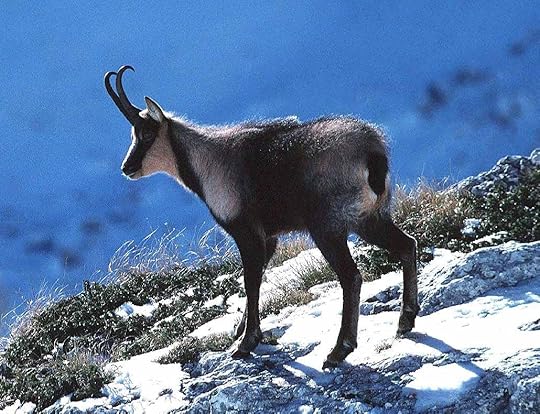Brain Pain discussion

This topic is about
Franz Kafka
Kafka Stories - 2014
>
Discussion - Week Two - Kafka - Wedding Preparations in the Country
date newest »
newest »
 newest »
newest »
 This is a work in development that was clearly left in a less developed form than is typical even for Kafka. In parts it becomes a kind of tangle of thoughts that won't become untangled. It has it's good points too.
This is a work in development that was clearly left in a less developed form than is typical even for Kafka. In parts it becomes a kind of tangle of thoughts that won't become untangled. It has it's good points too. I sometimes enjoyed the way that the bystanders appeared as Raban observed them, almost as though they were the "extras" in a production of city life that isn't quite convincing. It has a sinister quality, in that we can imagine they're all in on something, or they are a facade behind which some mystery lurks.
I think my favorite part was the end of the first version, covering everything to do with the omnibus ride, especially the end which has that familiar vibe, as he's pondering whether he should wait for the innkeeper to greet him, or emerge on his own, considering all of the possible implications... and then we're just left hanging.
Obviously--I think--this is a bit like peering into the notes of the author and seeing some of his brainstorm material that hasn't been given much form or direction yet.
I think it may be valuable as a learning tool for a writer to examine how version two (or the "second manuscript") compares to the first... though actually I'm not sure whether we know which was really first to be written (I skipped introduction and any notes again, as I'm prone to do). Anyway, the beginning of the second manuscript felt like a somewhat improved version. I assumed it may have been more terse and had material omitted, but actually looking back I discovered that some material had been expanded.
Compare version 1:
"Then one caught sight of a lady whose hat was heavily laden with ribbons, buckles, and flowers."
To version 2:
"Then one caught sight of a slim lady whose face twitched slightly, like the flickering light of the stars, and whose flat hat was loaded high and to the brim with unrecognizable objects; she appeared to be a stranger to all the passers-by, without intending it, as though by some law."
Of course these are both translations, but I feel I like Manuscript Two better based on this. Meanwhile, I'm not sure I enjoyed the expanded scene in the hallway before emerging into the rain, involving a long dialogue with the old man he encountered. I certainly liked it at the outset, but it felt that it threatened to meander too much, and who could guess what was on the "missing" pages (perhaps intentionally missing, if the author tossed them). But again, this was work in progress. None can know how much would have been further edited, developed, or cut if he had pursued it further.
-----------------
I hope the participants in our reading will hang in for "The Judgement," coming soon, as I recall that as quite powerful and a big step in the direction of what a completely developed Kafka story looks like.
 I picked up Poetics Of Cinema by Raul Ruiz and turned to a random page. (More bibliomancy). It references a term coined by Walter Benjamin, but I haven't read him (obviously a project is soon underway in brainpain)... anyway somehow it gave me an impression which seemed to relate to the way I see bystanders in Kafka's Wedding Preparations:
I picked up Poetics Of Cinema by Raul Ruiz and turned to a random page. (More bibliomancy). It references a term coined by Walter Benjamin, but I haven't read him (obviously a project is soon underway in brainpain)... anyway somehow it gave me an impression which seemed to relate to the way I see bystanders in Kafka's Wedding Preparations:"This time I'd like to play with an expression invented by Walter Benjamin, 'the photographic unconscious.' When we examine a photograph, fixed or in movement, a certain number of elements immediately stand out. They escape from the compact collection of themes that constitute the photograph, and then, once escaped, they reconfigure themselves naturally so as to constitute a new motif. Let's take any picture as an example: say, a picture representing the central square of the Province of X. The photo will show us a part of the square, a cathedral in the background, some benches in the shade of ancient trees, and something like fifteen passers-by. Five or six features have been enough to represent the scene. We'll call those five or six features Provincial Square. But there are other elements in the picture whose reason for being escapes us. What function does the dog to the left in the background have? And that man dressed in black, missing his right shoe? And the eagle in the sky? Why do all the passers-by look at the same point off camera? All these unnecessary elements have a tendency, curiously, to reorganize themselves forming an enigmatic corpus, a set of signs that conspires against the ordinary reading of the picture, adding to it an element of uncanniness, of suspicion. We will call that conspiracy, in a provisional way, the photographic unconscious (though the expression is Benjamin's, we will see that it can be extended to phenomena which he probably never imagined)."
Anyway, now I'm inspired to do a reread of Poetics of Cinema, and I regret not nominating it for the spine... let's make it my early nomination for Spine 2015. It's nominally a book about cinema, but it's also a kind of concentrated and brilliant madness. I feel, when I read it, that Ruiz is the smarter but madder version of an image I have for myself. His book could also produce a fair degree of brain-pain in the average reader.
Zadignose wrote: "I picked up Poetics Of Cinema by Raul Ruiz and turned to a random page. (More bibliomancy). It references a term coined by Walter Benjamin, but I haven'..."
Nice connections!
Much like the human brain picks and chooses what it sees in a scene, so too must the painter, photographer, cinematographer, and writer choose which part of a scene to focus on. This very subjective picking and choosing helps determine what the artist is trying to communicate.
In this story, even though pages are missing, we can still see Kafka's choices of details in his scenes. And maybe this discontinuity makes it easier to see the choices, since the narrative is broken, we can look closer at the shards instead of being mesmerized by the whole glass...
Nice connections!
Much like the human brain picks and chooses what it sees in a scene, so too must the painter, photographer, cinematographer, and writer choose which part of a scene to focus on. This very subjective picking and choosing helps determine what the artist is trying to communicate.
In this story, even though pages are missing, we can still see Kafka's choices of details in his scenes. And maybe this discontinuity makes it easier to see the choices, since the narrative is broken, we can look closer at the shards instead of being mesmerized by the whole glass...
 Excellent associations, Zad! And who needs Sontag when you can go to the original and read Benjamin?
Excellent associations, Zad! And who needs Sontag when you can go to the original and read Benjamin?Regarding "Wedding," you know how a major part of the scientific method is the isolation of parts or variables to test function and effect? A good way to approach these fragments is to imagine them as a Kafka work that has had some vital parts removed so that we may see how what is left operates in their absence; that is surely an overstatement but I feel over- and under- statement are always more interesting than plain old statement, like Kafka's mix of overstatement in content and understatement in style.
Anyhow, it may give more stark relief to some passages that might have otherwise been overshadowed by the bulk of real weirdness (a less elegant way to say what Jim did) Like maybe this one:
"But even all that work does not give one a claim to be treated lovingly by everyone; on the contrary, one is alone, a total stranger and only an object of curiosity. And so long as you say 'one' instead of 'I,' there's nothing in it and one can easily tell the story; but as soon as you admit to yourself that it is you yourself, you feel as though transfixed and are horrified."
This is obviously the key to all of Kafka's work (c.f. my statement above on overstatement), plus it's a healthy thing to remember when stuck in traffic.
Kafka's not known for being an author who tutors his readers much on the natural world but this following passage gave me a "wtf?" and prompted me to Google.
"...the horses stretched their thin forelegs, daring as chamois in the mountains."
All I had known of chamois was from my diving days: the little super-absorbent quickly-drying rag that one clings to ostensibly to dry one's limbs but is actually more of a security blanket when you're terrified and nearly naked.
I thought of this:

...when Kafka meant this:

A European mountain goat.
Books mentioned in this topic
Poetics Of Cinema (other topics)Poetics Of Cinema (other topics)
Authors mentioned in this topic
Raúl Ruiz (other topics)Walter Benjamin (other topics)
Raúl Ruiz (other topics)
Walter Benjamin (other topics)




First let me apologize for including this story in our schedule. I didn’t know it was so fragmented and had so many pages missing. That being said, were you able to follow the gist of the story? Were the missing sections jarring? Or did you find the missing material to be not a big deal, given the seemingly mundane content of the narrative?